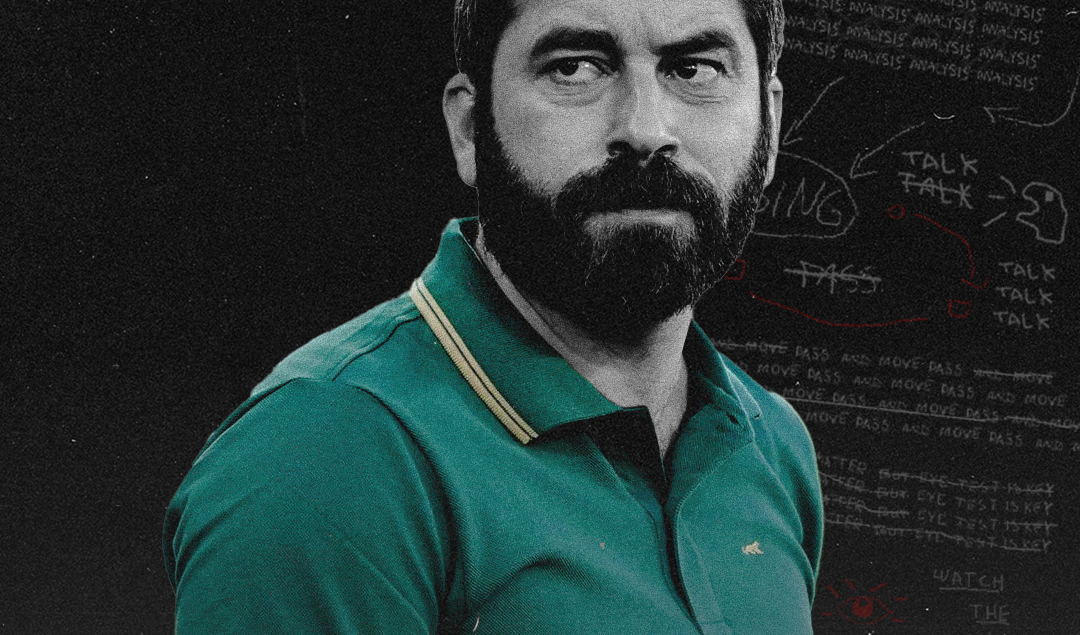Tactical Analysis: Luis Freire’s Rio Ave
At only 37 years of age, Luis Freire is the youngest coach in the Primeira Liga. Freire has coached at every level of Portuguese football, managing 351 games in total and gaining seven promotions in his career with a host of different teams. He has moved from the I Div.Lisbon AF with Ericeirense all the way to the Primeira Liga as the Rio Ave coach now.
Rio Ave play in the Primeira Liga (the top division in Portugal). They were founded in 1939, and play their home matches at the Estadio do Rio Ave. Various Portuguese internationals like Alfredo, Paulinho Santos, Quim, Rui Jorge and Fábio Coentrão started their careers at the club, whilst several promising youngsters like Jan Oblak and Ederson first started to break through at the Vila de Conde club.
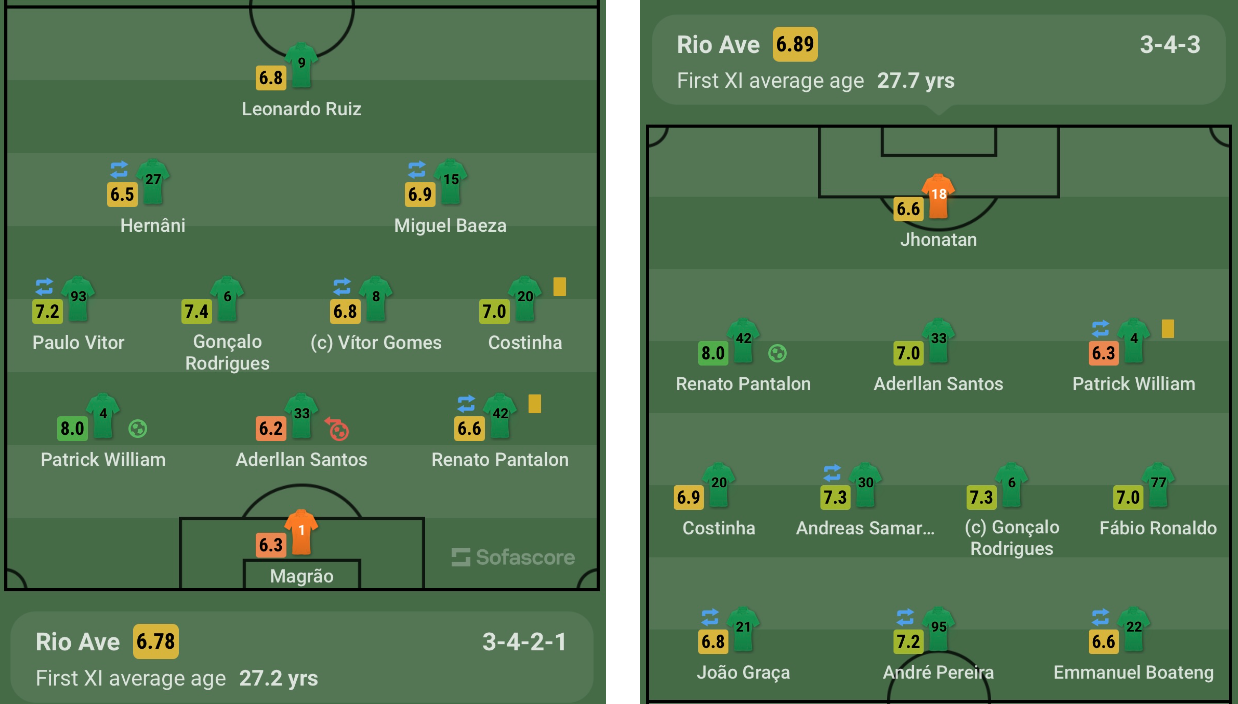
(Figure 1 – Rio Ave Team (SofaScore)
In Figure 1, you can see Freire likes to set his Rio Ave side up with a three at the back formation, either playing a 3-4-3 or a 3-4-2-1, depending on whether they want inside forwards, or direct wingers. There are also occasions where Rio Ave have decided to pack the midfield areas and play a 3-5-2 in order to play with three central midfielders.
Rio Ave look to be compact when defending and make concise forward passes allowing them to break, and counterattack their opponents. In 34 games, Rio Ave had under 50% possession in 19 of their games in the league, showing their preference to soak up pressure and catch teams on the break. Of Rio Ave’s 10 league wins, 7 of the 10 wins came from having under 50% possession, whilst only 3 of their wins came in games they held over 50% possession.
However, it is important to point out, just because they had less possession than their opponents in more games, the passing levels were still excellent with an 81.7% pass accuracy according to Goalpoint. This was the fourth-best in the Primeira behind the big dogs of Sporting, Benfica and Porto.
Another key figure in Rio Ave’s tactics is their crossing numbers, completing 15+ crosses in all but 11 of their 34 games. This is due to the width being provided by the wingbacks, and the three forwards (2 inside forwards and a centre forward) attacking the box, along with the arriving central midfielders at times.
These crossing numbers show how Freire likes to attack using the width of the pitch, utilising his wing backs. By having three forwards, all comfortable in the half spaces, this allows those three forwards to drop into the half spaces and link up play, which can cause defensive rotations and spaces to open up out wide for the wingbacks to attack.
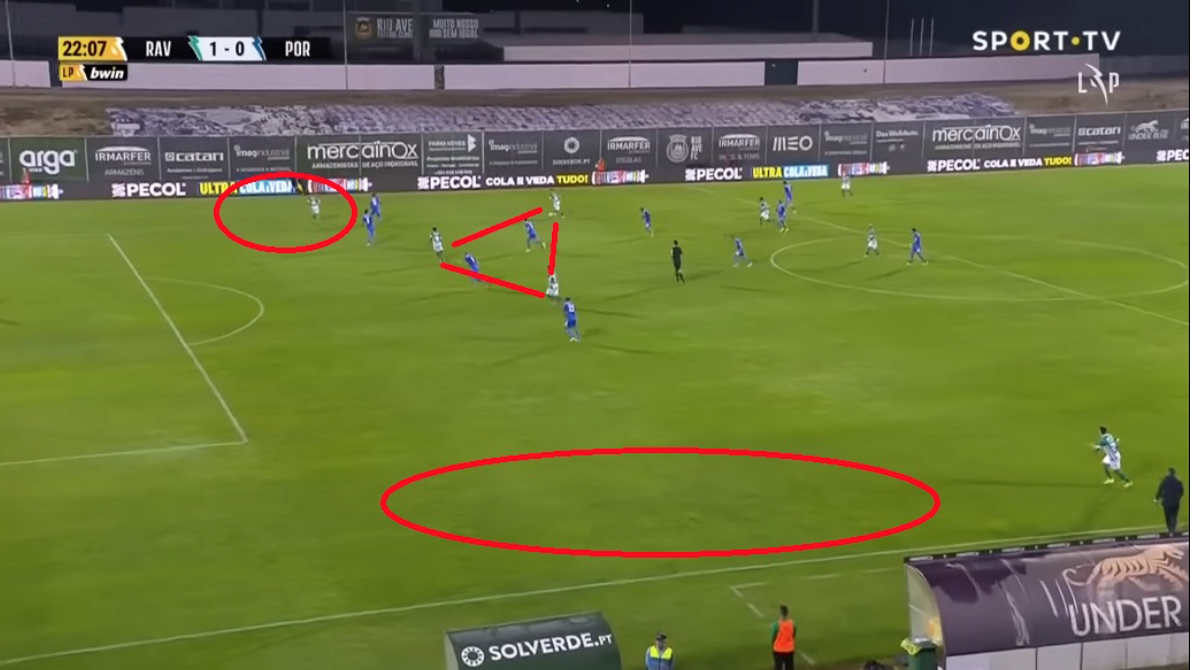
(Figure 2)
Figure 2 shows an example of the three forwards playing close together and linking up play, which causes the back four to shift over to the right side of the pitch. However, this allows the left wingback (the only player occupying this space on the opposite side of the pitch) to make a run into the space and get himself into a dangerous area.
This is hard for opposing defences to deal with, especially on counterattacks, as the midfielders can be caught out of position, which then allows the three forwards to play close together in the central areas. This means the opposition defenders have to come over to deal with the central overload, which leaves space for the runners out wide (the wingbacks).
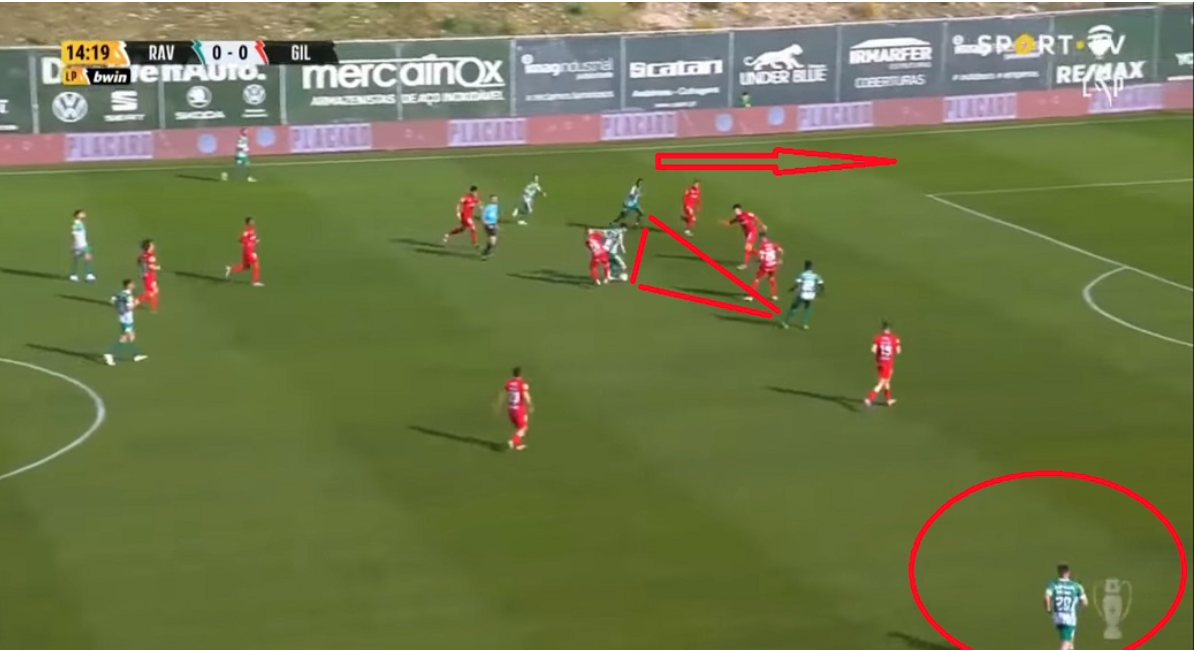
(Figure 3)
Figure 3 shows another example of the gravity caused by the three forwards, creating space for the wingbacks to be free. This is a staple of the way Rio Ave play under Freire, and this is a clear pattern of play that emerges for Rio Ave.
Another way Freire looks to unleash his wingbacks in attacking areas is through the use of wide centre backs. In the build-up play, the wide centre backs (both left and right-sided) will push forwards to join in. This then allows the wingbacks to push on and occupy high and wide areas at all times in possession.
This is another way to create overloads on either flank too, as rotations between one of the forwards, the wingback and the wide centre back can create 3v1/3v2 scenarios on the flanks, allowing Rio Ave to have the numerical superiority to create a chance and cross the ball into the box.
Freire wants his wide centre backs to be comfortable on the ball, and able to help in attacking areas. One of the wide centre backs for Rio Ave that fits this mould is Josue Sa. The central defender, who usually plays on the right side of a back three, makes 55.42 passes per 90, has an 85.8% pass completion, and makes 4.54 progressive passes per 90, as well as 1.47 progressive carries per 90.
The progressive passes and progressive carries are the key attributes here, as it shows his ability to progress the ball down the flank and contribute in attacking areas. His passing numbers also show he is comfortable on the ball, and this is important for Rio Ave’s build-up play.
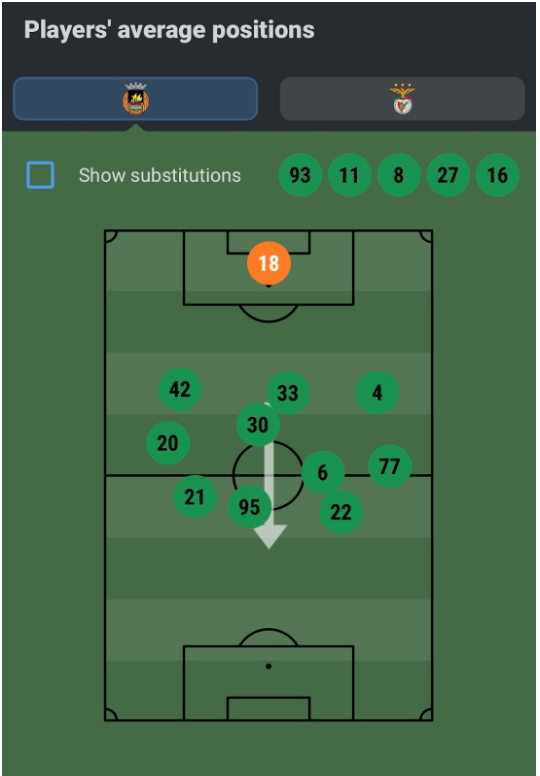
(Figure 4)
As previously mentioned, Freire likes to defend in a compact block, making it hard for the opposition team to play in central areas. Figure 4 shows an average positions map, with all of the players extremely close together, making a tight and compact defensive block. This forces the opposition team to create down the flanks, and put balls into the box, and because this is what Rio Ave are wanting to do, they are prepared to deal with the crosses with their three central defenders.
By compacting the central areas of the pitch, it also allows Rio Ave to funnel the ball into defensive traps. What I mean by that is forcing opposition players into tight areas that are hard to operate in, allowing the defensive players to make easier blocks and tackles. Rio Ave registered 129 blocks in the 2022/23 season, compared to Benfica with 85 blocks, Porto with 90 and Sporting with 100. This stat shows that Rio Ave are good at showing opposition forwards into unfavourable positions, where they can perform blocks and then break on the counterattack from this defensive action.
Over time, Luis Freire has evolved in his tactical understanding and abilities, due to his wealth of experience at only a young age, competing in all seven of the Portuguese Leagues, and gaining promotion from each of them. However, many principles of Freire’s philosophy have stayed the same. Defending in compact blocks, being able to make high output and concise passes on the counterattack to a high level, and utilising width on both counterattacks, and in overload scenarios.
It has been a rocky few years for Rio Ave. Eight months after losing a 24-penalty shootout to Milan and missing out on a spot in the Europa League group stage, they would lose 5-0 to Arouca in the two-legged promotion/relegation playoff, dropping down to the second tier and hiring Freire as their new manager, who had led Nacional to first place in the second tier when the season was abandoned due to the COVID-19 pandemic. Nacional secured promotion to the top-flight whilst Freire achieved a sixth promotion in his eighth season as a manager before leaving the island club in March 2021.
Freire would get his seventh promotion with Rio Ave, leading them to a first-place finish with 70 points before steering them to a 12th-place finish in the top-flight, with the Vilacondenses taking one point from their first three before pulling off a shock 3-1 win at home against Porto to end August. They picked up their momentum from that point on, grabbing four more wins before the World Cup Break and consolidating themselves as a solid midtable side, never falling in danger of a relegation battle, and they’ll be looking to build on an impressive return to the Primeira under the management of their 37-year-old manager.
By: Connor Holden /@ConnorHolden00
Featured Image: @GabFoligno / Gualter Fatia / Getty Images
